Delights of a Farm Visit in Sicily
Part 2: A day on a family 'agriturismo' in an ancient quarry, with a cooking class, lessons in herbology, beehives, sculpted lions and a pasta lunch!
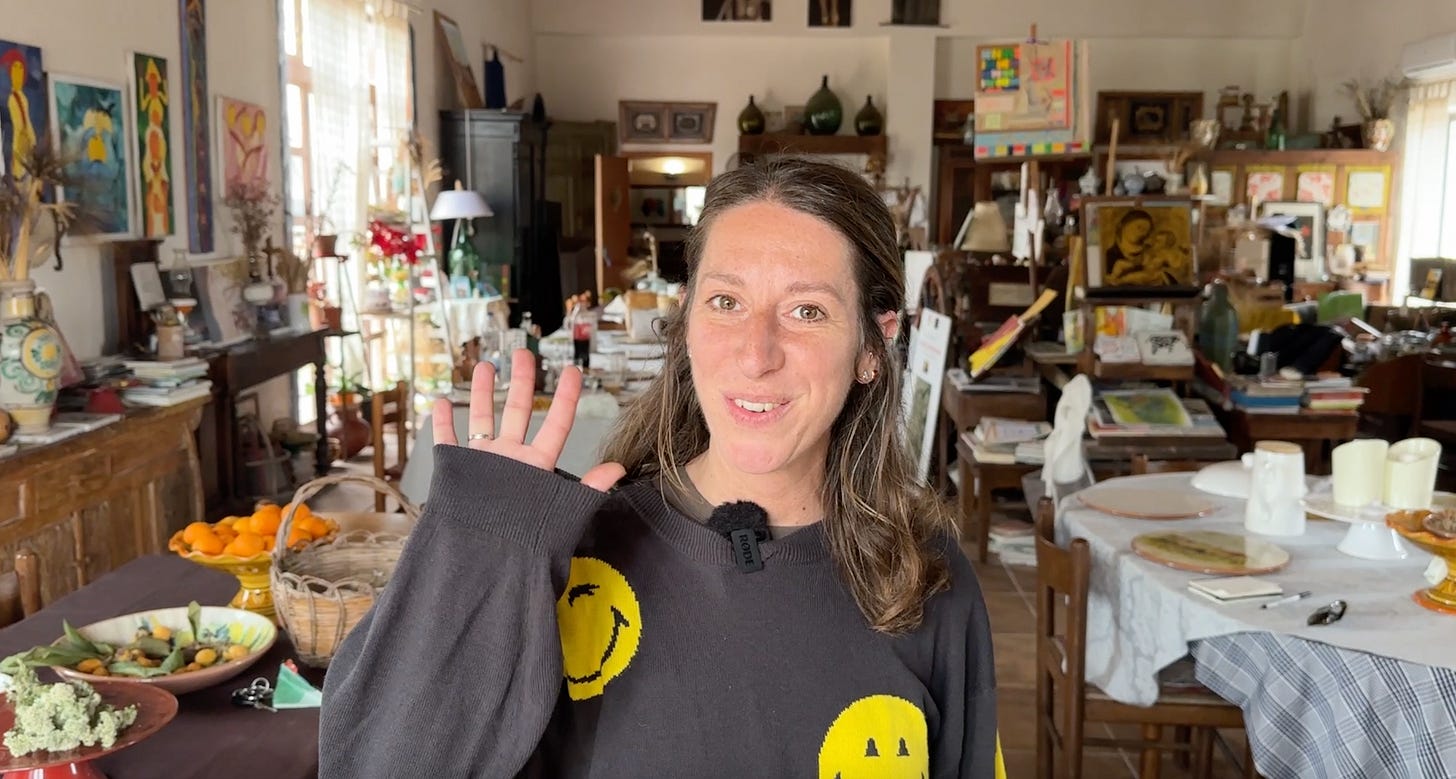
Following a short break for a western road trip, here, as promised, is more from our Sicilian holiday during first weeks of May. If you missed Part 1, you can read it here. And please don’t miss the link to my piece with recipes for Agriturismo Stallaini’s cavatelli with herb pesto and cassatina at the bottom of this post—or click here.
After our memorable food tour in Palermo, we thought another culinary adventure might be in order at our next stop, Syracuse (Siracusa), in the southeastern part of Sicily.
An ad on Airbnb Experiences in Sicily read “Cooking class in the farm” and had a 4.99 out of 5 rating for a “top-rated host.” It was in an agricultural area outside of Noto, one of the neighboring historic towns (they’re all historic in Sicily!), but still more than a half hour drive into the wilds—and we didn’t have a car. Jeff wrote to the host, whom he at first thought was a guy called Manuel.
It turned out to be a woman, Manuela Sarcià, and she volunteered to pick us up. The next morning Manuela, dressed in a cheery sweater with yellow smileys, turned up promptly at 9 a.m. at our B&B.

“Are you ready for some cannolo therapy?” she asked. It turns out that there’s a well-known pastry shop called Cannolo Terapia in Syracuse, and she hoped we didn’t mind if she stopped there for a double espresso—and we could also try a cannolo made by a master pastry chef, the owner Alfio Neri. We’d just eaten breakfast and weren’t hungry, but how do you say no to a cannolo at a place whose very name is a testament to the therapeutic benefits of eating one of these signature Sicilian pastries?
Sure, we said. (It was something we said a lot when sampling the delicious foods of Sicily!)
As we awaited our special cannolo from Neri, a spritely man with round yellow-framed glasses, Manuela answered our questions about what makes this part of southeastern Sicily so special.

The island of Sicily is “like a continent,” she said, with every landscape—beaches, hills, mountains, volcanoes. “But here it’s more concentrated. It’s full of UNESCO human heritage sites—there are archeological ruins everywhere you go, even on the farm.”
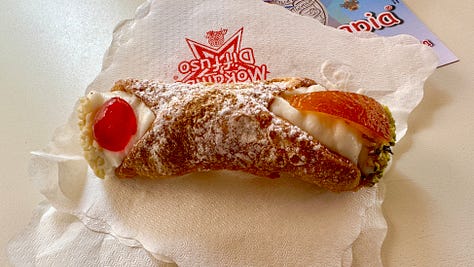
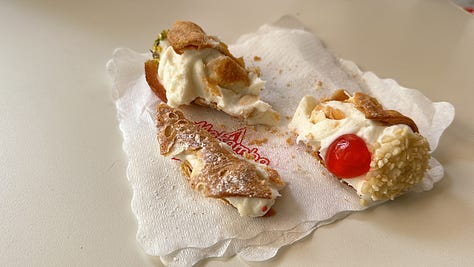
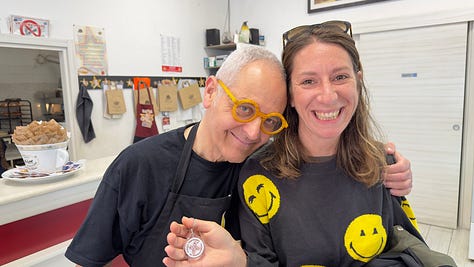
Our “cannolo terapia” session done, we headed for the farm in Manuela’s small gray Toyota. We passed fields filled with citrus groves and other crops, farm animals, and miles of stone walls, some hundreds, possibly thousands of years old, held together without mortar or cement, like ancient jigsaw puzzles.
As my husband Jeff photographed the landscape flying by on the two-lane road, Manuela answered my questions about the farm, Agriturismo Stallaini.1 After her father Rosario (Roy) Sarcià, an agronomist and land surveyor, inherited a house in a limestone quarry from his father more than 30 years ago, he decided to buy the land around it.
“Everybody told him he was crazy—it was abandoned,” Manuela said.
The land, measuring some 60 hectares (about 148 acres), is now filled with growing things—citrus and olive groves, wheat fields and fruit orchards. Some of it is left wild to allow animals—horses, donkeys, foxes, turtles, porcupines, dogs and cats—to roam free, grazing and “fertilizing” the plants as they wander. The cultivated portions include about 300 olive trees of different varieties that the family handpicks in the fall with relatives, friends, volunteers, and guests pitching in to bring in the harvest, which is then processed into oil at a nearby mill.
There is also a “biodiversity fruit field” filled with special trees that Manuela’s father planted with rare and endangered Sicilian fruit varieties—figs, pomegranates, peaches, plums, cherries, persimmons, pears, grapes and apples. There are several varieties of each, carefully labeled. None of it is sold commercially.
“Our mission is to preserve it and to reproduce the fruit everywhere on the farm so that someday people can come here with a basket and pick their own fruit,” Manuela said.
There are also vineyards, from which the family makes wine with some of the area’s signature grapes—including Nero d’Avola, Moscato di Noto and Malvasia. One ancient variety they just began planting is Zibibbo, whose name comes from the Arabic word zabib, which means raisins. It was supposedly Cleopatra’s wine of choice and arrived in Sicily via the Phoenicians and Greeks some 2,800 years ago.2
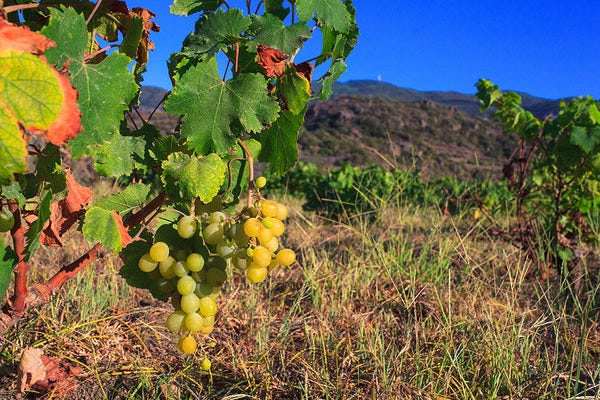
“I love Zibibbo,” Manuela said. “When you drink Zibibbo, it’s like you’re eating the fruit.”
But winemaking is not for the impatient; it will take another two years until the first crop of Zibibbos can be harvested to make into wine.
The family, including Manuela’s mother, Loredana, has also turned this unconventional farm into an unconventional business: a place to stay, to relax in a pool in a rock quarry, eat meals prepared in the spacious, stainless steel kitchen, mostly from farm-raised products, to explore nearby historic towns and natural landmarks, take classes not only in cooking, but also sculpture, painting, or beekeeping, or to come for a week in fall to help with the olive or grape harvest.
“This is a place where many people come from everywhere, thanks to the nature that is so rich here,” Loredana told us. “They are attracted by the authentic Sicily that they find here.”
Once a year at the end of August, the farm is also an artist’s retreat, when sculptors, painters, photographers, poets (and maybe bloggers?🤞) come from all over the world to stay at the agriturismo. As if this were not enough, the farm is also licensed to provide educational experiences for children—some with learning issues or autism, others who are blind. Manuela specializes in working with these little ones and has even learned some braille. Through smell and touch, the blind children “see more than us,” she said.
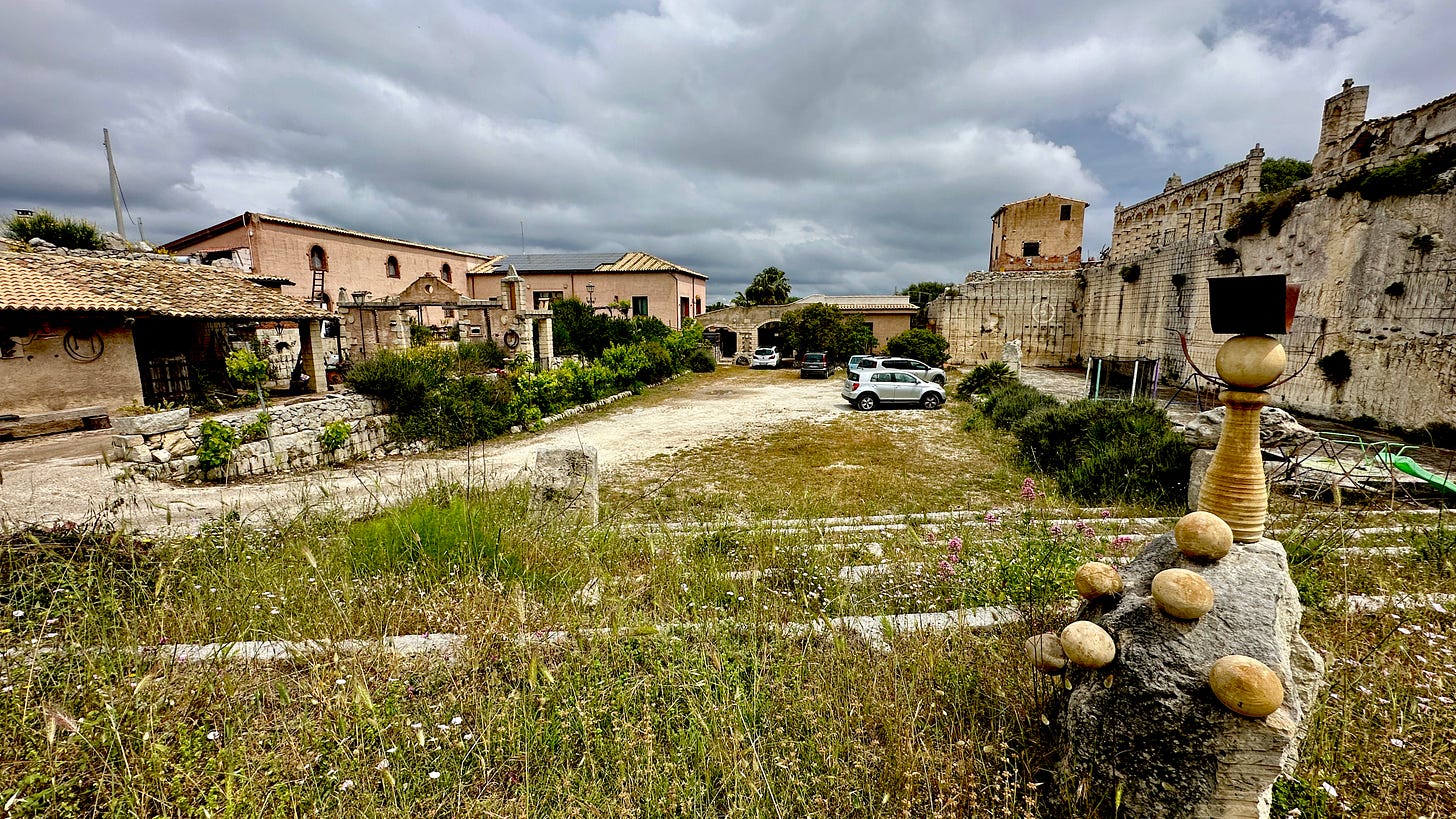
Of course, when we signed up for a cooking class, we had no idea of how much more there was to the farm than we knew, and before we left, I was already wondering how I might return to stay for a week—or possibly forever!
But I’m getting ahead of myself.
Herb Collecting
It was raining a bit as we wandered about the former quarry gathering wild herbs that Roy, who does a lot of the cooking, would make into the special pesto for the pasta we would shape by hand. Manuela, 36, has a job as an urban planner that she enjoys, but her heart is clearly on the farm—and it shows in her infectious enthusiasm for every flower, fruit, bug or butterfly, as well as the limestone sculptures made by visiting artists that dot the grounds.
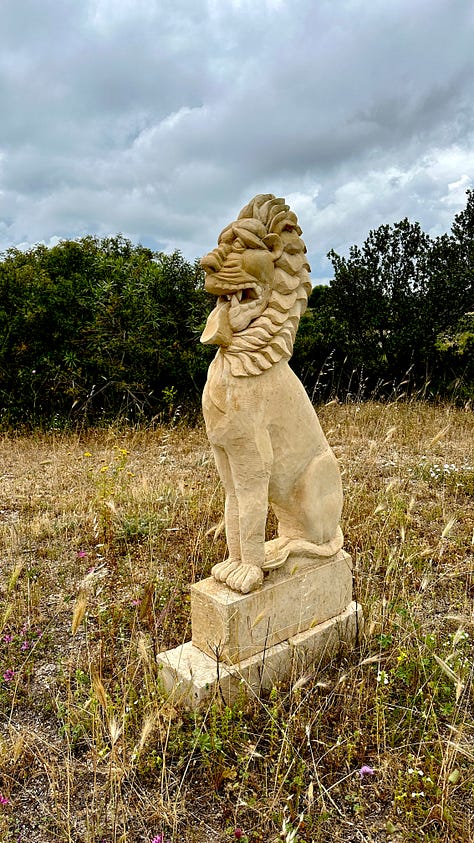
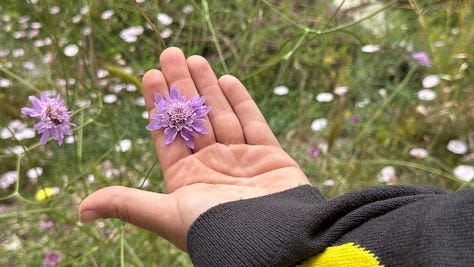
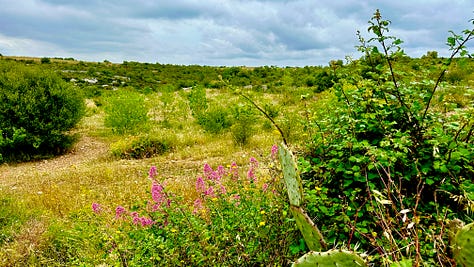
“This is wild thyme. We use it instead of oregano on top of bread because it’s more digestible. It makes flowers in July. It’s the only flower we have in July, so the bees are really happy,” she said.
We gathered the herbs in a basket, including the thyme, plus lavender, mint, fennel leaves, purple capers, sage, and nepetella, an herb that smells a bit like basil, is used in a special Sicilian spiral pizza dough and in an unusual tea that’s pink and sweet, though without added sugar. It may even have aphrodisiac properties!

Manuela pointed out colorful boxes containing beehives that lie just beyond a low rock wall. She painted one of them with her daughter Matilde when she was only a year old because she wanted “to give her the possibility to know the world of the bees and to preserve it.”
Matilde, now 6, is named after Manuela’s late grandmother, whom she still misses and thinks her daughter resembles.
“They are both smiley, sociable, and like to sing and dance.”
Making cavatelli and cassatina
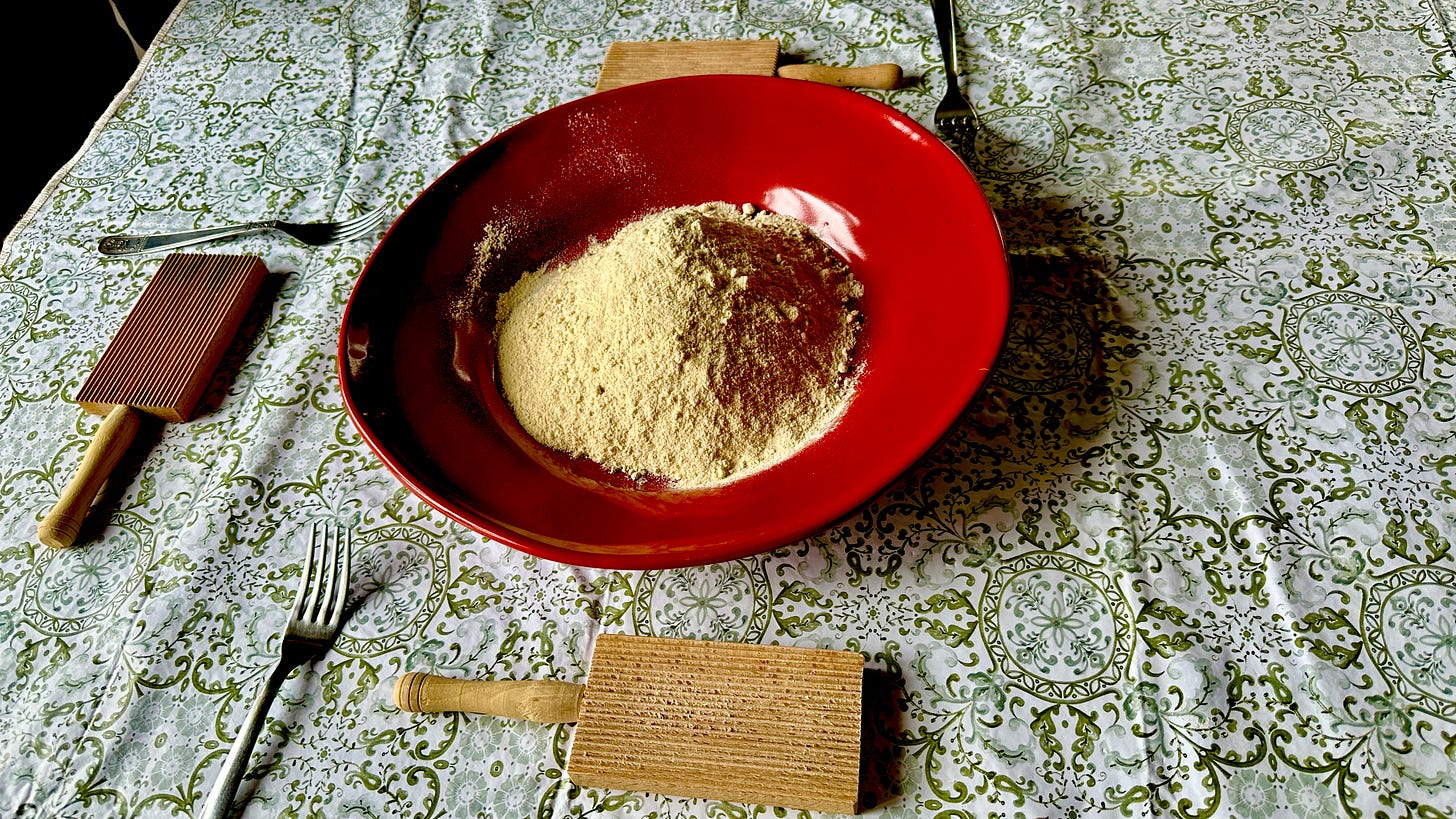
It was the memory of her grandmother Matilde that inspired Manuela to create the cooking class.
Every Sunday, starting when Manuela was only 3, her grandmother made cavatelli with her, her brother and sometimes their uncle.



Manuela, wearing her chef’s whites bearing the farm logo, showed me how to make the dough and shape the little cavatelli—shell-like pastas curling around small hollow centers—as her grandmother once taught her, using a grooved little wooden board called a rigagniocchi. I used my finger tips to mix water into the little volcano of farm-grown, stoneground flour, milled from the special ancient variety of wheat grown on the farm—and also used to make bread.
Manuela demonstrated how to add just enough water to the flour to make a stiff dough, incorporating it little by little. As I’ve found with bread, the amount of liquid needed varies depending on the weather.
Only flour and water is used to make this pasta—no eggs.
“In Sicily we were really poor,” she said.
Although there’s less poverty than there once was, there are still a lot of poor, especially in smaller Sicilian towns in the interior. Many of the young leave to get an education, often in Italy’s larger cities, like Rome, Florence, Bologna and Milan, or outside of the country, where there are more job opportunities. Some don’t return, but others, like Manuela, come back, to teach or find other work or create their own job possibilities. It’s what she’s trying to do on the farm.
“I want to just promote the good part of Sicily. Everybody in their imagination, it’s all about Mafia and “il padrino” and bad things. But there are so many good things here and a really giant heritage that you must know first and preserve.”

Speaking of good things, the pasta was terrific, served with the sauce Manuela’s father made from the herbs we had gathered—and there was a wonderful hors d’oeuvre plate, a second pasta with mussels, and, for dessert, the small cassatas—called cassatinas—that we made with almond paste, ricotta, candied orange peel, chocolate, cinnamon, liqueur and ladyfingers, decorated with the flowers and fruits we had foraged in the garden.
Click on the link below to find recipes for cavatelli with pesto and a cassatina, provided by Manuela, along with my notes and discussion.
I highly recommend checking out this wonderful farm, Agriturismo Stallaini, if you visit Syracuse —and you definitely should spend some time in this city and its gorgeous historic island heart, Ortygia). I hope one day to return to both Syracuse and to the farm—perhaps to take part in the olive or grape harvest or the arts festival—or to taste some of the biodiverse fruits and those unusual wines!
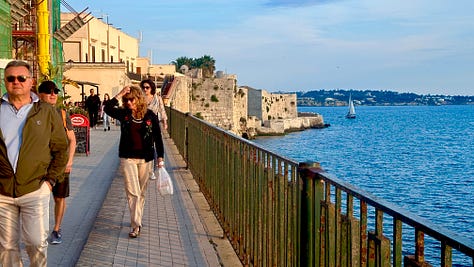
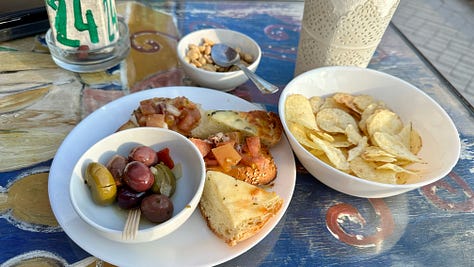
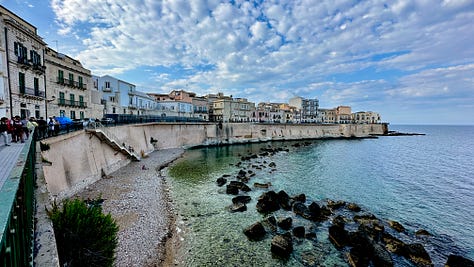
As always, thanks for your likes, comments, messages, shares and subscriptions! See you next time!
Ruth



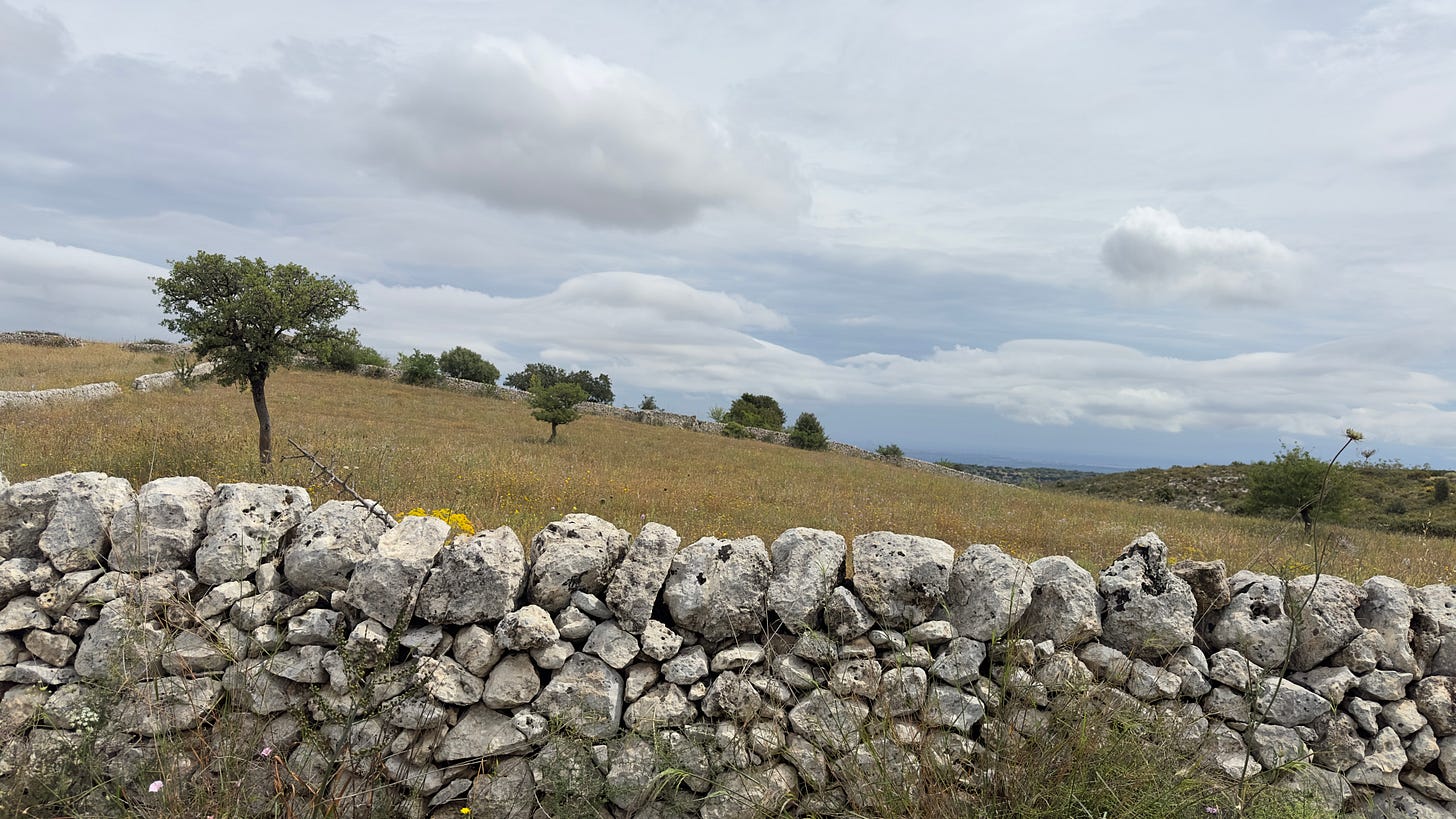
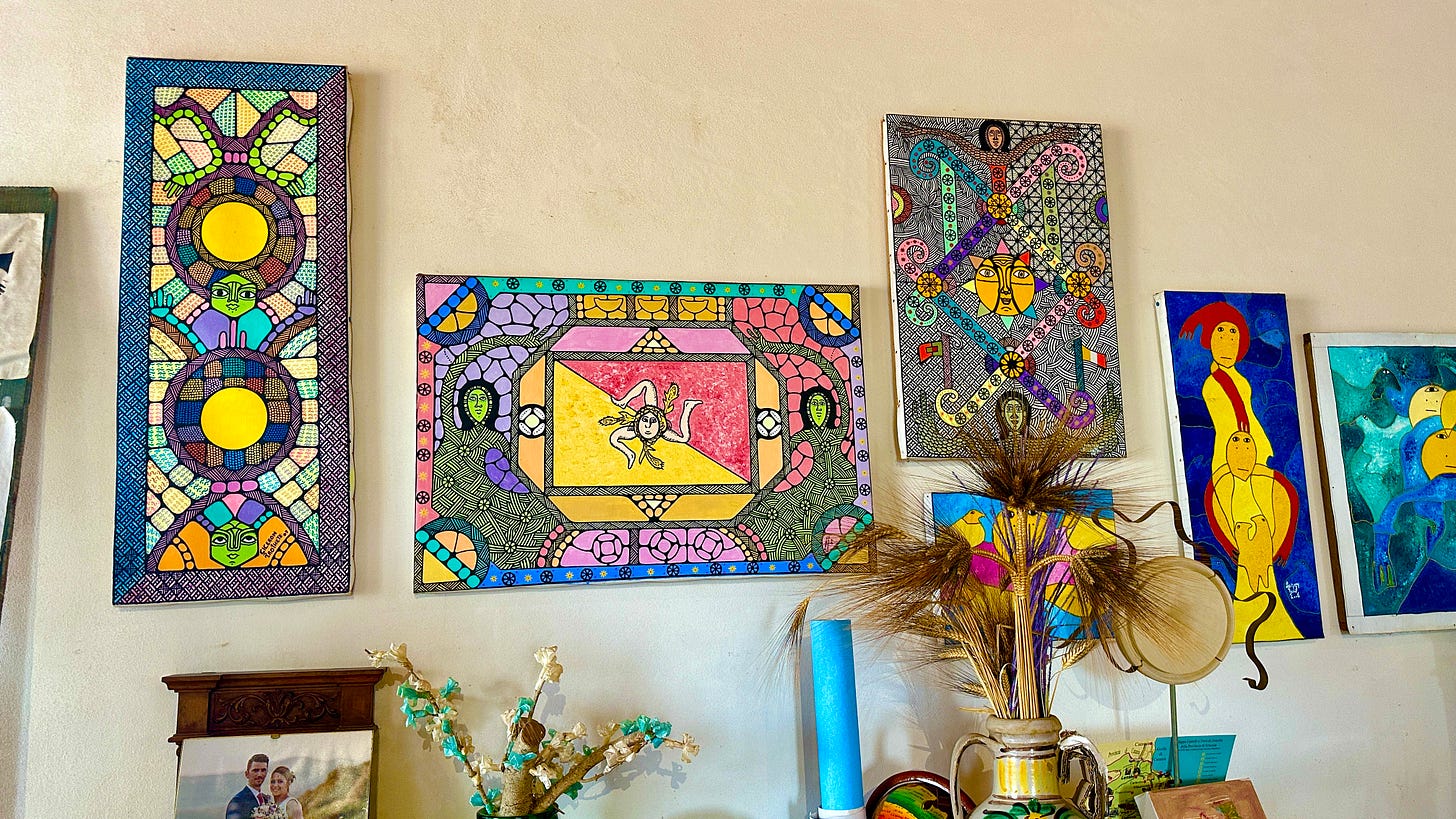


Such a magical experience- let’s organize a ladies trip!!!
What a wonderful article. You are so lucky to have so many amazing experiences and we're all so lucky to read about them.